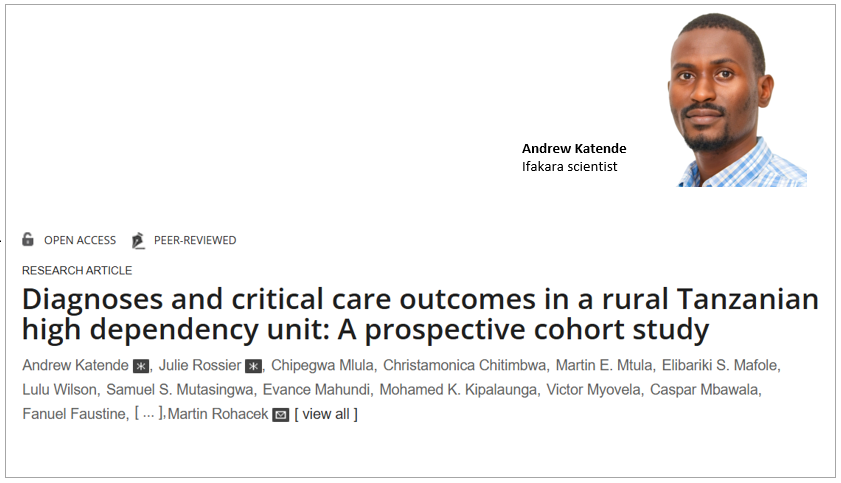
CRITICAL CARE: New study reveals survival trends in Tanzania’s rural low-resource settings

A groundbreaking study led by scientists from the Ifakara Health Institute and the University of Basel has shed new light on the lives of critically ill patients treated in rural Tanzania.
Conducted at the St. Francis Referral Hospital in Ifakara, Morogoro Region, the study is among the first to closely examine patient outcomes in a high-dependency unit (HDU) in a low-resource, rural setting.
Published on PLOS ONE mid this week, the research highlights the urgent need for better healthcare resources in underserved areas.
Critical care in the heart of the country
Over the course of one year—from April 2023 to March 2024—491 patients were admitted to the HDU. These patients, many of them aged 45 and above, presented with severe conditions requiring close monitoring. The most common diagnoses included sepsis, stroke, acute heart failure, aspiration pneumonia, and diabetes-related complications.
Despite the hospital’s best efforts, 30% of the patients died in the HDU, and 37% did not survive their full hospital stay. Conditions such as sepsis and pneumonia showed especially high mortality rates, reflecting the serious nature of cases seen at this level of care.
Warning signs for survival
The research team identified several key factors that were strongly associated with higher mortality rates. Among these, older age—specifically individuals aged 45 and above—was a significant predictor. Additionally, patients presenting with very low blood pressure were found to be at increased risk.
Another critical factor was severely impaired consciousness, indicating a profound decline in neurological function. Lastly, oxygen saturation levels below 90% emerged as a vital indicator linked to elevated mortality. Together, these factors highlight important clinical markers that can help guide early identification of high-risk patients.
The research team believes these findings underscore the importance of early recognition and intervention, especially in facilities with limited equipment or staff.
Leadership behind the work
The study was led by Andrew Katende from the Ifakara Health Institute, Tanzania and Julie Rossier from the University of Basel, Switzerland. Supervision came from Prof. Maja Weisser and Dr. Martin Rohacek, both senior researchers also affiliated with Ifakara. Their collaboration reflects a strong partnership between local and international institutions, focused on improving healthcare delivery where it's needed most.
A lifeline in low-resource settings
This study is more than a research milestone—it tells the story of patients and caregivers battling overwhelming odds. It also affirms the growing role of high-dependency units as essential tools in rural health systems, where full intensive care is often unavailable.
The findings may inform life-saving policies and training for frontline staff across Tanzania and similar contexts elsewhere.
>> Read the full study, here.
